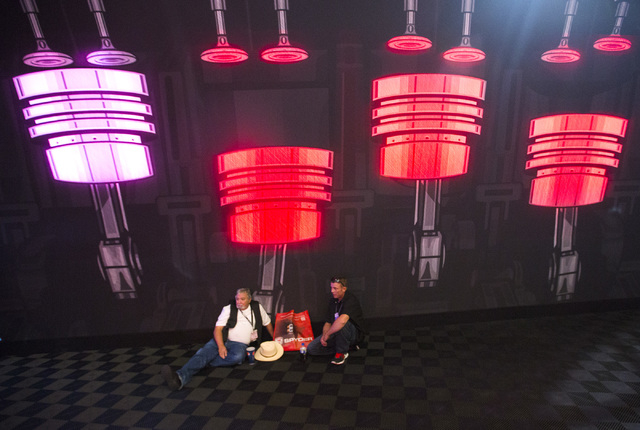Vegas sees largest convention numbers since ‘08 with 5.2 million
Lost in the shuffle of Las Vegas’ record-setting visitor volume of 2014 was another trend important to the city: The meetings and trade show industry is back.
The Las Vegas Convention and Visitors Authority on Friday publicly confirmed what most people already knew, that a record 41.1 million people visited Southern Nevada last year.
Because of 3.1 million arrivals in December, a 5.5 percent increase over December 2013, Las Vegas not only reached the LVCVA’s projected total of 40 million, it surpassed it.
Among those millions were 5.2 million conventioneers, the largest number hosted by the city since 2008 and a 1.2 percent increase over 2014. While the total didn’t surpass 2007’s record 6.2 million attendees, it was ahead of 2013’s total.
The city’s convention venues also had more shows in 2014 than the previous year, 22,103.
But the statistics that might make resort owners smile the most were 2014’s increases in occupancy rates and average daily room rates.
Citywide occupancy was 86.8 percent last year, 2.4 percentage points better than in 2013 and 22 points above the national average.
Weekend occupancy soared to 93.3 percent, just 1 point off 2007’s banner year.
The LVCVA also reported the average daily room rate rose $6 to $116.73 in 2014. That’s just under $16 more than the $132.09, the all-time best posted in 2007.
Strip hotels had room rates that averaged about $60 more than downtown. Strip rates were calculated at $125.80 a night, 5.2 percent ahead of 2013’s rate.
Authority officials said Las Vegas experienced year-over-year visitation gains every month of 2014.
The biggest increases occurred in January, December and August. September and November showed the smallest increases.
The LVCVA also monitors visitor volume statistics in Laughlin and Mesquite — cities that experienced differing results in 2014.
Laughlin struggled all year, finishing with 2 million visitors, a decline of 2.7 percent.
The Colorado River city at the southern tip of Nevada near Arizona and California had its first year-over-year increase in visitation in 2014 in December. The 0.1 percent bump in visitors was the first increase since December 2013.
Most observers believe Laughlin is hampered by competitive pressures from Southern California’s tribal casinos. The region is attempting to rebound by using Las Vegas’ success formula of hosting special events that draw large crowds.
Laughlin also had a 1.4 percent increase traffic on State Highway 163, the main route from Las Vegas, a 60.7 percent occupancy rate, up 1.1 percentage points from 2013, and an average daily room rate of $44.12, a 2.9 percent increase over the previous year.
While Laughlin trudged through 2014, Mesquite visitation soared.
The community on the Nevada-Arizona border about 90 miles north of Las Vegas on Interstate 15 finished 2014 with double-digit percentage increases in tourists every month except December. For the year, volume was up 14.8 percent to 1.2 million.
Hotel occupancy was up 2.7 percentage points to 72.3 percent and the average daily room rate fell 5.9 percent to $53.65.
Daily traffic on I-15 at the Nevada-Arizona border was up 1.3 percent to 22,806 vehicles daily.
Highway traffic showed a 7.9 percent decline in September when flash floods damaged the highway between Las Vegas and Mesquite and closed it for more than a week, diverting traffic north through Utah.
Contact reporter Richard N. Velotta at rvelotta@reviewjournal.com or 702-477-3893. Find him on Twitter: @RickVelotta






















